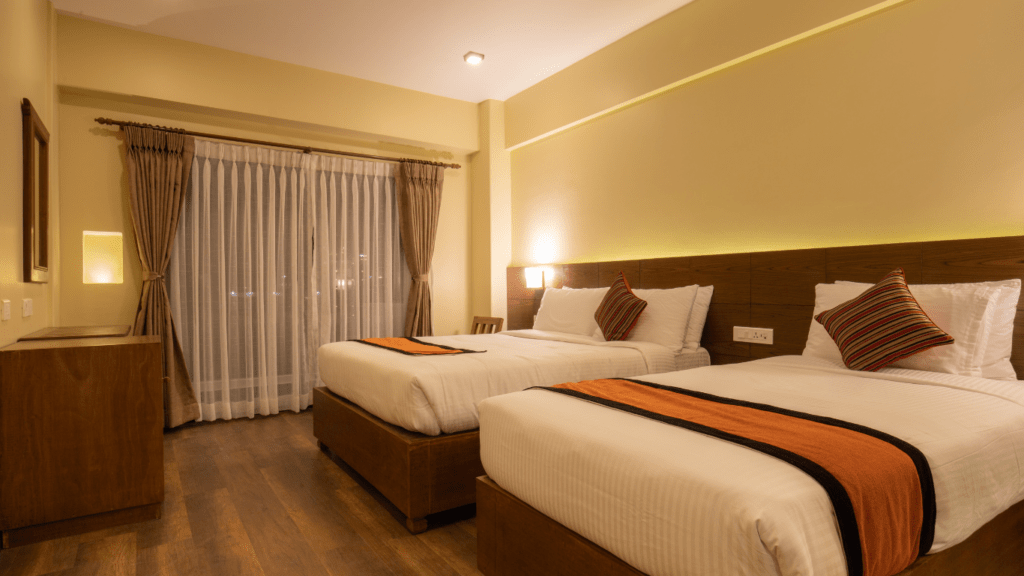Dreaming of that perfect getaway? I know the feeling. Traveling can be one of life’s greatest joys, but it often comes with a hefty price tag. That’s why I’ve put together a simple travel savings plan that’ll help you turn those dreams into reality without breaking the bank.
Understanding the Importance of a Travel Savings Plan
Establishing a travel savings plan creates a roadmap to achieving travel goals. A targeted approach to saving helps prevent financial stress during trips, allowing for a more enjoyable experience.
- Realistic Budgeting: A clear savings plan allows for accurate budgeting based on destinations and activities. Knowing how much to save each month helps gauge affordability.
- Clear Goals: Setting specific travel goals, such as visiting a country or attending an event, adds motivation. Clearly defined objectives keep me focused on my savings efforts.
- Preventing Debt: Relying on credit cards for travel can lead to debt. A savings plan encourages cash payments, promoting responsible financial habits and reducing interest payments.
- Flexibility: A well-structured travel savings plan offers flexibility. If plans change or unexpected expenses arise, having a financial cushion allows adjustments without stress.
- Enhanced Enjoyment: Prioritizing savings for travel enhances enjoyment. Knowing I’ve budgeted adequately for activities, accommodations, and dining brings peace of mind.
- Long-Term Benefits: Building a travel savings plan fosters long-term financial discipline. It encourages a savings mindset, benefiting other areas of my financial life.
Investing time in understanding the importance of a travel savings plan ultimately transforms the way I travel, paving the way for unburdened adventures.
Step 1: Set Your Travel Goals
Setting travel goals lays the foundation for a successful savings plan. By identifying what you want to achieve, you create direction and motivation.
Short-Term vs. Long-Term Goals
Establishing both short-term and long-term goals aids in creating a balanced travel plan. Short-term goals, such as weekend getaways or day trips, can be accomplished within a year. They provide immediate gratification and help build your savings habit.
Long-term goals, like an international vacation or a multi-city tour, require more extensive financial planning. Setting a timeline for each type of goal enhances clarity and focus.
Destinations and Experiences
Choosing destinations and experiences that resonate helps refine your travel goals. Research different locations to find those that fit your interests and budget. List specific activities, such as hiking, cultural tours, or culinary classes, that enhance the travel experience.
Including these details not only boosts motivation but also informs the total cost, guiding your savings strategy. Prioritizing destinations based on your interests keeps the excitement alive throughout the saving process.
Step 2: Assess Your Current Financial Situation
Assessing your current financial situation establishes a foundation for effective travel savings. Understanding where you stand financially helps in creating a realistic and achievable savings plan.
Budgeting Basics
Budgeting forms the backbone of your travel savings plan. I recommend tracking your income and expenses to gain clarity on your financial landscape. Begin by documenting all sources of income, including salary, side hustles, and any passive income.
Next, list essential monthly expenses such as rent, utilities, groceries, and transportation. After identifying these, note discretionary spending categories like dining out, entertainment, and shopping. This clear view enables me to determine how much I can allocate towards my travel savings while maintaining financial stability.
Identifying Income and Expenses
Identifying income and expenses requires precise documentation. Start by calculating total monthly income. Include all reliable income sources for an accurate representation.
In terms of expenses, categorize them into fixed and variable. Fixed expenses remain steady month-to-month, such as mortgage or loan payments. Variable expenses change, influenced by lifestyle choices.
I recommend using budgeting tools or apps for ease of tracking. Once I understand my income versus expenses, I can make informed decisions about where to cut back and how to boost my travel savings. By prioritizing essential expenses and reducing non-essential ones, I create room for funding my travel dreams.
Step 3: Create a Dedicated Travel Savings Account
Creating a dedicated travel savings account simplifies the process of saving for trips. This account not only keeps travel funds separate from everyday expenses but also often offers better interest rates.
Choosing the Right Account Type
Selecting the right account type is crucial for maximizing savings. Consider a high-yield savings account that typically offers higher interest rates than traditional savings accounts. Online banks frequently provide better terms, allowing for easy access to funds while growing savings.
Another option is a money market account, which combines features of checking and savings accounts but may require a higher minimum balance. Research different banks to find the best rates and account terms that suit my needs.
Automating Your Savings
Automating savings makes the process effortless. Set up automatic transfers from my checking account to my travel savings account each month. I can decide on a specific amount or a percentage of my income to transfer automatically.
This approach eliminates the temptation to spend excess funds while ensuring consistent contributions to my travel goals. Some banks also allow for round-up features, where purchases round up to the nearest dollar and transfer the difference to my savings account, adding an extra layer of saving.
Step 4: Develop a Savings Strategy
Creating a savings strategy is essential for reaching travel goals effectively. This strategy should include specific monthly savings targets and potential avenues for additional income.
Monthly Savings Targets
Establishing clear monthly savings targets streamlines the saving process. Calculate the total cost of the planned trip, then divide it by the number of months until departure. For example, if your trip costs $3,000 and you’re planning for 12 months, set a target of $250 per month.
Adjust this figure based on changing goals or unexpected expenses. Regularly reviewing and adjusting these targets keeps motivation high and ensures alignment with financial capabilities.
Finding Extra Income Opportunities
Exploring extra income opportunities can significantly boost travel savings. Consider options like freelancing, part-time work, or gig economy jobs. Engaging in tasks such as dog walking, ride-sharing, or online tutoring often provides flexible earning potential.
Additionally, selling unused items through platforms like eBay or Facebook Marketplace can generate quick cash. Stay resourceful and dedicated to finding ways to supplement your income, as each dollar adds up toward your travel aspirations.
Step 5: Monitor and Adjust Your Plan
Monitoring and adjusting your travel savings plan ensures that you stay on track and adapt to any changes in your financial situation or travel goals.
Tracking Progress
I monitor my savings regularly to gauge my progress toward my travel goals. I recommend checking my travel savings account monthly to verify that contributions align with my targets. It helps to log my savings in a journal or a budgeting app, providing a visual representation of how close I am to my goal.
I also compare my current savings against the specific monthly targets I set. This comparison motivates me and highlights areas that may require a change in strategy.
Making Necessary Adjustments
I adjust my plan as needed based on my progress. If I find that I’m ahead of schedule, I might set aside additional funds for spontaneous activities or upgrades. Alternatively, if my savings fall short, I reassess my budget and identify expenses I can cut or additional income sources I can tap into.
I remember that flexibility is vital—unexpected changes, like an emergency expense or a travel opportunity, may necessitate significant adjustments. Staying proactive with my plan allows me to adapt and achieve my travel goals effectively.
Step 6: Enjoy Your Travels!
Traveling is the ultimate reward for your hard work and savings efforts. I focus on making the most of each trip while being mindful of my budget.
Spending Wisely During Your Trip
Spending wisely during travel enhances the experience without generating stress. I prioritize costs by allocating a daily budget and sticking to it. Researching local attractions, dining options, and transportation can lead to exciting experiences at lower prices.
Using budgeting apps helps me track expenses in real-time. This approach identifies potential overspending before it becomes an issue. I also explore free or low-cost activities, like local festivals or scenic parks, to enrich my itinerary without overspending.
Dining smartly plays a crucial role in budget management. Eating at local eateries or markets often offers authentic experiences at a fraction of restaurant prices. I also consider cooking some meals when accommodations have a kitchen.
Celebrating Your Achievements
Recognizing accomplishments throughout my travel journey keeps motivation high. Upon reaching a savings goal, I treat myself to a special activity or experience, like a guided tour or a luxurious meal. It’s a way to celebrate the effort I put into saving.
Throughout my trips, I document experiences in a travel journal or blog. Capturing memories and reflections allows me to appreciate my journey and the planning that made it possible. Each successful trip is a testament to my financial discipline and dedication, providing motivation for future travel aspirations.




